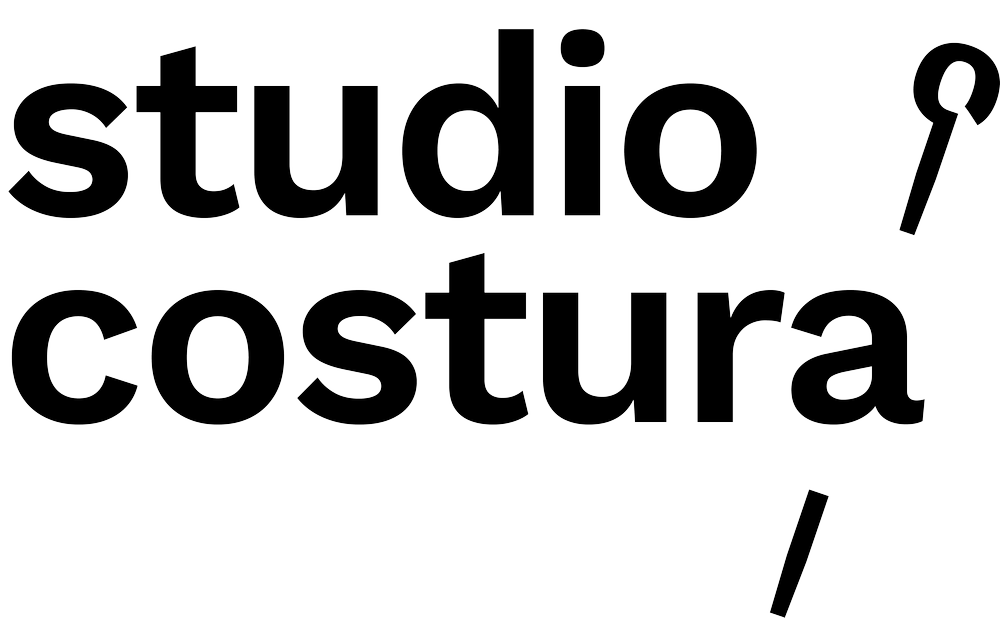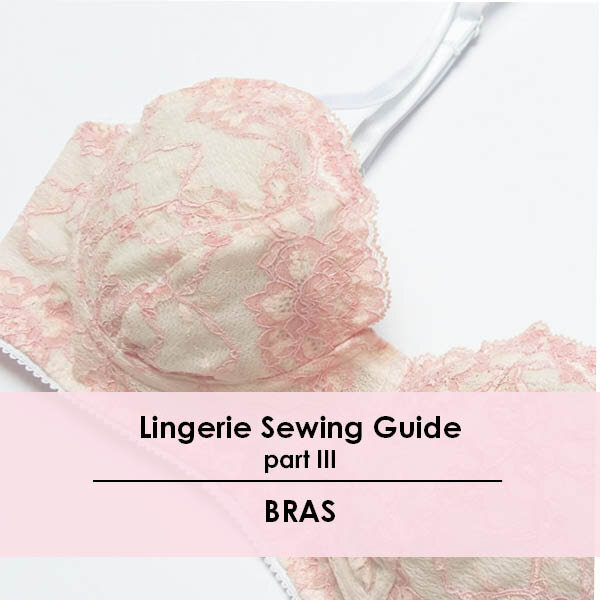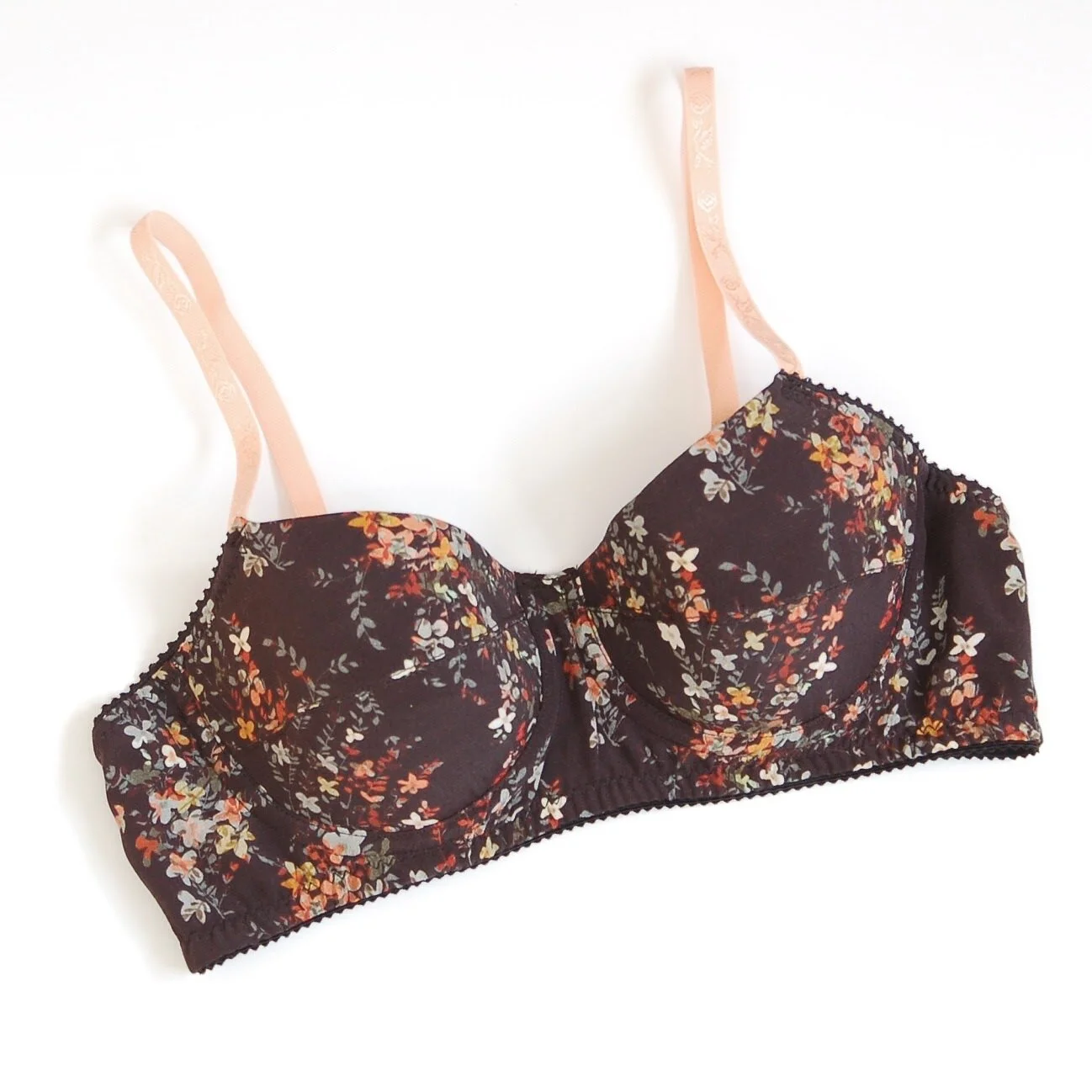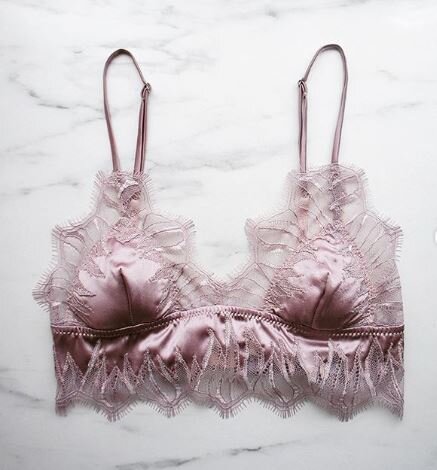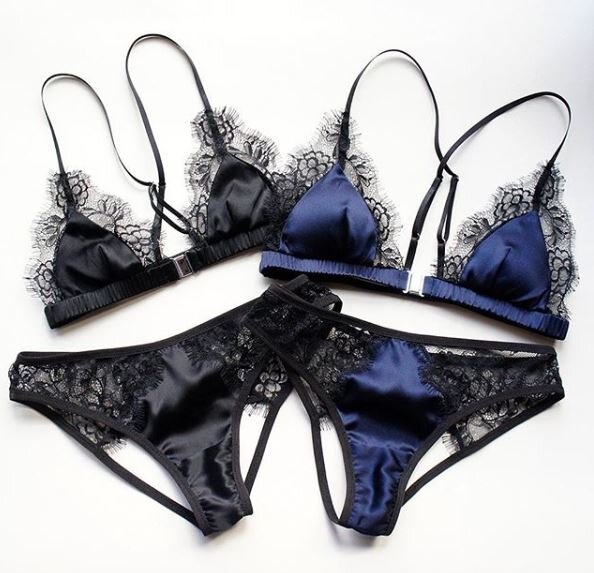Sometimes things take more time than anticipated...this post comes two years (!!!) after I wrote the first two lingerie guide posts about panties and bralettes. To be honest I kind of forgot about it but on the positive side I have more information to share now than back then. So I guess that’s a good thing, right?
As a little recap, these posts are full of resources you can look up when you’re starting/moving on on your bramaking journey. If it’s your first time around here/first time sewing lingerie, I’d really recommend you to start the post about sewing panties. Then go on and check out the post about bralettes...and then come back here as I’m going to share many useful resources that can help you a lot.
First of all, this post will be about bras, mainly about underwire bras. I’m going to share what I’ve learned from my own experience and more importantly, I’ll be sharing great online resources so you can read more. Bramaking at home as you could guess is quite a niche, there are not so many people actually doing it (yet). But the good news is that there are actually many seamstresses who are trying it out and there are also many great resources. Since I opened up my Etsy shop and started to sell bramaking supplies I’ve been closer to this niche and I can tell you that I’ve seen a huge growth of popularity in the past years. This is great as there are now so many more online resources for you to learn from. I’d like to thank everyone who’s putting together blog posts, filming videos, writing books and posting their makes on Instagram so all of us can learn from their process!
Sewing patterns
I’d say that when you start out you should first pick a pattern and after that you'll know which supplies you need exactly. Luckily there are many good bra patterns available, most of them in PDF format so you can use them regardless of where you live. I’d say it really depends on your personal preference when you choose a pattern, check out different designs and think about what kind of RTW bras you like to wear. There is of course the size factor that can narrow down your choice but many brands have been making their patterns in wider size ranges lately.
When I made my first underwired bra I actually started out with a bikini, you can see the Sophie bikini post here. Sewing underwired bikinis and underwired bras is quite similar construction wise. I then made a couple of Boylston bras by Orange Lingerie and this is where my bramaking journey began, hehe. I had absolutely no idea back then when I started and I learned everything through trial and error + online courses and books. So please bare with me when you read those first posts, haha, although I guess they could be interesting from the perspective of a total beginner!
Here’s a list of brands that sell underwire bra patterns (if you like a design just check out the pattern hashtag on Instagram and you’ll see many versions so you can make up your mind):
Of course there are many other brands that produce patterns for underwire bras (tell me in the comments if you want to share your favorites!) but these are the ones I’ve used personally or I know that other people have used them successfully. I’d like to give a special mention to the Black Beauty bra by Emerald Erin as it has been very popular among seamstresses from all over the world.
I couldn’t point out just one pattern that I’d recommend for your first project. Most of the underwire patterns are based on the same principles so as long as you have good instructions you should be good to go.
I use the Simplicty 8229 underwire bra pattern in my bra classes at the academy for various reasons. First, it’s one of the few bra patterns that comes in paper format and I need a physical pattern to use it in class so the students can trace their size and they will later on take the pattern home with them. Second, this pattern is entirely lined with powermesh which makes it easier to get the best possible fit on their first bra (the cups are stretchy so they will probably fit better even when the sizing is not 100% accurate). Learning how to construct/sew a bra is not very complicated for someone with an intermediate sewing level, but getting the right fit does usually take more than just the first try and in class we don’t have time for additional fitting.
Supplies
The supplies you need for your bra depend on the pattern you choose so you should carefully read your pattern instructions before buying supplies. As I told you in the bralette post, it’s probably easier if you first get a bramaking kit to see what the supplies should look like and then you can see if it’s possible to source the different supplies on their own.
I have bramaking kits available at my shop and here’s a list of shops I like that offer kits and supplies per meter:
Tailor Made Shop (US)
Emerald Erin (Canada)
BWear (Sweden)
Nellie Joans (New Zealand)
You can also check out the lists of shops curated by Cloth Habit and Orange Lingerie.
To understand which supplies you need it’s better to divide in parts. Basically there are the cups, the cradle (front band) and the band. The cups and the cradle can be designed for rigid or stretchy fabrics, the back band has to be stretchy.
Lace
See if you need rigid or stretch lace for your pattern, the pattern is drafted either for stretch or rigid fabrics and to get the right fit you need to respect that. You can’t really make a non stretchy fabric into a stretchy one (if you have really small cups I guess you could maybe get away with it, haha) but you can underline stretchy fabrics with rigid lining and this way you can use stretch lace for rigid cups. It can be a bit tricky for the first time but it’s definitely possible.
Fabric
If you are making a bra that doesn’t use lace you can try out different types of fabrics. Duoplex is a common speciality bramaking fabric choice as it’s soft but not stretchy, lingerie satin is also a good option. I’ve also used different knits and even wovens, if you’re working with a pattern that has rigid cups you can actually use many different fabrics for the whole bra (apart from the back band that should be stretchy).
Tailor Made Shop offers pretty lingerie satin and Emerald Erin has duoplex in her shop.
Lining
You can of course not line your bra but most of the patterns are made with lining and in my opinion it makes it look and feel better if you line your bra. Again it depends on your pattern requirements but usually the cups and the cradle (the front part of the band) are lined with stable lining like non stretch tricot, sheer lining or bra tulle. The back band has to be stretchy in order for you to have a comfortable undergarment. The best option is to use power mesh for that but you can also use a double layer of stretch mesh. Choosing more or less supportive supplies also depends on your needs, bigger cups usually need stronger fabrics too.
I have sheer lining and powermesh available by meter at my shop!
Read the post about bra lining options by Emerald Erin here, she explains the difference between the rigid lining fabrics.
Foam
You can use cut and sew foam for patterns that are designed for this material or you can also hack most of the patterns in order to use it. Cut and sew foam is cut as your cup pieces and once you sew the seams you’ll have a nice 3D cup ready to use.
Elastics and the rest of the supplies
The elastics and other small supplies used in underwire bras are usually the same ones you would use for a bralette (see the bralette post). I usually prefer using a wider (12-16 mm wide) lingerie elastic for the bra band to give more support. You should also consider using wider straps for bigger cup sizes, this way you’ll have a more comfortable bra.
You also need underwire channeling tape for your bra, you’ll insert the underwires inside this tube like tape once your bra is finished.
Read my bramaking elastics guide here. Also it’s really useful to watch the highlighted stories at my shops IG feed, I highlighted there which supplies are in my kits and where you should sew the different elastics on your bra.
Wires
Your pattern will tell you which wire type you need and you should also see which size. Not everyone obviously finds the standard wire size they “should be in” comfortable, you can try out different wire sizes and styles to find what works out for you.
Read this post by Emerald Erin about underwires, she explains really well the differences between wire shapes.
Sizing
As always, whatever you do, don’t use your best supplies to sew up a pattern you haven't used before, always make a muslin with similar materials you’d be using for your final project (use rigid fabric and stretchy fabric as stated in the pattern instructions!). To know your size you can refer to this post in the Mara bralette sewalong (Mara bralette has bra sizing so it works the same way).
Once you’ve made a muslin you can start checking the fit. The only downside with bramaking in my opinion is that you won’t see the exact fit until you finish the actual bra and wear it. That’s why getting to your ideal size/pattern can be a journey...but don’t give up, it’s worth it!
To be able to get to the point of getting the perfect fit on your own at home I’d recommend you to read blog posts, follow bramakers on Instagram, take an online course or get some bramaking books if you’re into it (or do all of it if you’re really into it, haha). And practice of course!!! There’s nothing better than practice to get better at something, right?!
References
As I said in the beginning of this post, luckily we have now way more information about bramaking online than before. There are many good resources and I’ll share here a list of things I’ve tried myself and what has been recommended to me :)
Online courses
Beverly Johnson (the founder of Bramakers Supply) has good online courses about sewing underwire bras at Craftsy, this is where I first learned how to sew lingerie.
Another course that has been recommended to me is the bra pattern drafting course by Porcelynne. I have her book about drafting and grading panties which I like and I’ve been told that the course is really good.
Great Bra Sewing Bee is an online event that took place for the first time this summer and I was sponsoring it. The event included many online courses and a lot of resources + a very active FB group for bramakers. The event is now over but you can still access all the content if you register for an extended access.
Books
Bra Makers Manual I and II have been the books where I learned all the bra drafting and scaling from. Both are full of useful information about everything related to drafting and sewing bras. You can get the books in paper or CD format from their shop in Canada or from BWear in Sweden.
Other useful books:
Pattern Cutting for Lingerie, Beachwear and Leisurewear
Blogs
Studio Costura: I guess you’re already here but in case it’s the first time you visit my page, go to the Learn how to sew lingerie section to see all the posts.
Tailor Made blog: Ying publishes her roundups there so you can stay up to date with everything new in the bramaking community.
Emerald Erin: just go through her archives, there are so many great posts about all things bramaking.
Cloth Habit: not an active blog anymore but there are many interesting posts to look up.
Orange Lingerie: tutorials, inspiration, posts about techniques.
Instagram and YouTube
@emeralderinsews: her #braaweekchallenge is the best, could watch her sew for hours!
@tailormadeshop: the creator of #braugust, a community event that connects bramakers all over the world
@always.sew.hungry: I really like her makes and she’s sharing great tips about sewing bras
@the _ twisted_poppy: she makes tons of lingerie and shares all the details about her modifications
Liz Sews on YouTube: her channel has a lot of great videos about bramaking
Also, if you’re in Madrid and want to come to learn how to sew your own lingerie you know where to find me, just check the courses calendar at Historias Hiladas Madrid!
I hope you found this guide useful, I’m sure there’s no information when you click through all those links! I’ll save that post in the Learn to Sew Lingerie section of this page, this is where you can find all the guides, sewalongs and tutorials. If you want to share your favorite resources that are not included in this post just leave a comment here or send me an email, I’d love to hear from you.
Aaaand to wrap this post up I’m also try to encourage you to try out sewing your own lingerie so here goes a GIVEAWAY: I’ll be giving away one bra + panties kit from my shop!
To enter the giveaway all you have to do is comment on this post and tell me what would you sew with the kit? Would you like to start out with panties as a first project? Are you into bralettes or already sewing underwired bras? Any patterns you’d like to try out?
The giveaway will be open until next Sunday, 15th of November and I will announce the winner here on the blog. I’ll choose the winner randomly from the comments and then I’ll contact the winner to ask for her address to send the package. The giveaway is open worldwide :)
Thanks for reading and good luck!!!
Edited on 16th of November:
The winner is Vikki Smith! Thank you everyone for participating and leaving your comments :)
